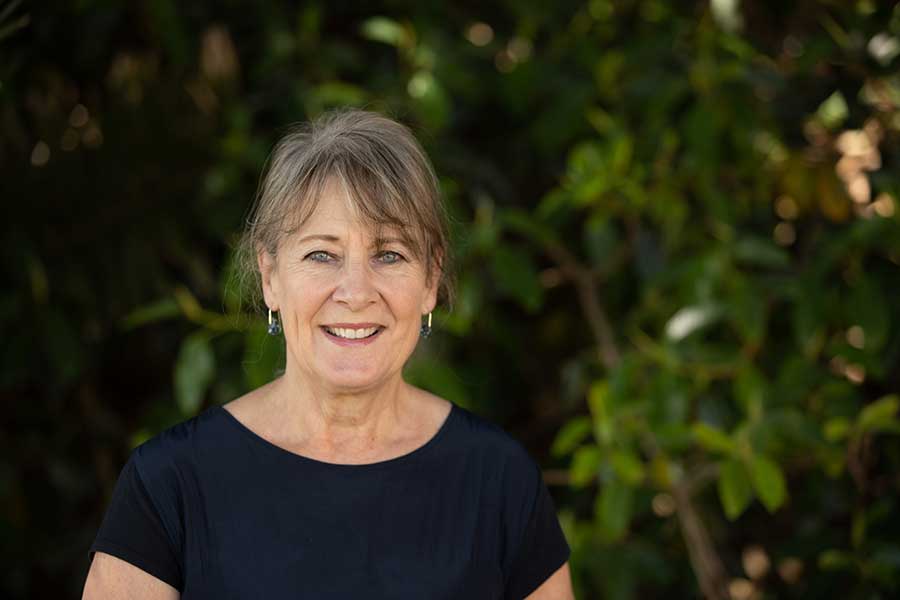Researcher Highlights
Delivering new research for mums and midwives
During her impressive 40-year research career, Professor Maralyn Foureur’s work has contributed to globally significant advancements in maternity care and midwifery for women and their support teams.

Professor Maralyn Foureur is an internationally esteemed researcher and clinician in the field of maternity care and midwifery. Her work is highly acclaimed for its contribution to maternity care advancements in Australian hospitals. In fact, in the mid-1990s, Maralyn’s PhD study introduced an entirely new model of maternity care into Australia known as “continuity of care”, which is now championed as best practice in our country and many others worldwide.
Maralyn’s current research explores the impact of the built environment—specifically, birth units within Australian hospitals—on the birth experiences of women and their support teams, and therefore birth outcomes. For women and their families, Maralyn’s research is making a personal impact that will last generations.
“My work helps midwives and other maternity care staff who need excellent knowledge and skills to support women well during childbirth. I want to make childbirth a positive and enriching experience for mothers, who will then take on the role of nurturing the next generation.”
Seamless, personalised care
Maralyn’s PhD research in the mid-1990s was ahead of its time. Her randomised controlled trial was the first project to explore “continuity of care” within midwifery—not just for low-risk women, but for all. What she uncovered would help revolutionise Australia’s approach to midwifery care in the years that followed.
“My PhD had a major impact in Australia and internationally. This model enables women to meet a small group of midwives during pregnancy, one of whom will provide her with care throughout her labour and birth and in the early days with her new baby.”
Maralyn’s PhD research established the effectiveness of this new model,
“Women overwhelmingly regard continuity of midwifery care during pregnancy, childbirth and the early postnatal period as the gold standard of care models. It meets their needs for a knowledgeable professional companion to guide them and their family through the unknown experience of childbirth.
“Women report feeling listened to and supported so that they never feel like just another patient having a baby, but that their care is highly, individually tailored to meet their needs.”
Together with evidence from 15 similar studies, Maralyn’s work now informs health policy across Australia and is cited by globally respected entities such as the Cochrane Collaboration and the World Health Organization. The studies demonstrated that women who were provided with continuity of care were 24 per cent less likely to experience preterm birth or early pregnancy loss.
At the University of Newcastle and elsewhere, continuity of care is now the primary model taught to midwifery students. It forms a significant part of their clinical placement experience; at the University of Newcastle, Bachelor of Midwifery students participate in a minimum of 10 relationship-based continuity of care experiences with childbearing women over the course of their studies.
By the time students step into the workforce, they are expertly equipped to provide women and families with the highest level of personalised care.
“Students want to be able to learn within this model of care so that their education needs are individually met, and they are well-supported. Midwives also love working in this way and feel their professional skills are well-utilised when working in continuity of care.”
Creating space for new life
In the past decade, Maralyn’s research focus has shifted from continuity of care to the architecture and design of birth units in Australian hospitals.
Maralyn explains that the built environment can have a significant impact on a woman’s neurophysiology during childbirth. Despite this, Maralyn remains one of very few researchers who are exploring ways to improve birthing spaces for women and their support teams.
“For staff, walking into a well-designed birth unit helps them to feel supported, calm and confident, to think clearly and carry out their work efficiently and effectively.
“We want to provide women and their families—and the staff who care for them—with an environment that is more likely to result in positive birth experiences for all.”
Many women who give birth in the Hunter region will ultimately be able to see Maralyn’s work firsthand. Her research is influencing the design of maternity units across the region, including the newly planned birth units at John Hunter Hospital and Maitland Hospital. It also guided the best practice design of maternity units further afield, such as the Royal North Shore Hospital in Sydney.
“My birth unit design research is considered world-leading. I really enjoy the creative process of designing research, designing birth units, and also designing education so that others can learn the creative process too.”
Maralyn’s research—from continuity of care to birth unit design—has made Newcastle a national leader in maternity services and midwifery models of care research. Her work is helping to continually improve best practice and build a robust base of evidence that can benefit women, families, staff and communities.
“I love being a researcher and partnering with other brilliant researchers in nursing, midwifery and medical sciences to answer the myriad of questions and challenges we face in health services across our region, nationally and internationally.
“Together, we are working to improve the health and wellbeing of our communities, and this makes me proud.”
The University of Newcastle acknowledges the traditional custodians of the lands within our footprint areas: Awabakal, Darkinjung, Biripai, Worimi, Wonnarua, and Eora Nations. We also pay respect to the wisdom of our Elders past and present.
